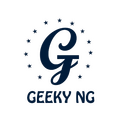14K
88 THE NATURE OF MATHEMATICS classes, and the notation " 1 + 1 " makes it look as if there were two. Remembering that 1 is a class of certain classes, what the above proposition means is : If a; and y are members of 1, and x differs from y, then x and y together make up a member of 2. At last, then, we arrive at seeing that the nature of Mathematics is independent of us personally and of the world outside, and we can feel that our own discoveries and views do not affect the Truth itself, but only the extent to which we or others see it. Some of us discover things in science, but we do not really create anything in science any more than Columbus created America. Common sense certainly leads us astray when we try to use it for the purposes for which it is not particularly adapted, just as we may cut ourselves and not our beards if we try to shave with a carving knife ; but it has the merit of finding no difficulty in agreeing with those philosophers who have succeeded in satisfying themselves of the truth and position of Mathematics. Some philosophers have reached the startling conclusion that Truth is made by men, and that Mathematics is created by mathematicians, and that Columbus created America ; but common sense, it is refreshing to think, is at any rate above being flattered by philosophical persuasion that it really occupies a place sometimes reserved for an even more sacred Being. BIBLIOGRAPHY THE view that science is dominated by the principle of the economy of thought has been in part 1 very thoroughly worked out by Ernst Mach (see especially the translation of his Science of Mechanics, Chicago ; Open Court Publishing Co., 3rd ed., 1907. On the history of mathematics, we may mention W. W. Rouse Ball's books, A Primer of the History of Mathematics (3rd ed., 1906), and the fuller Short Account of the History of Mathematics (4th ed., 1908, both published in London by Macmillan), and Karl Fink's Brief History of Mathematics (Chicago, 3rd ed., 1910). As text- books of mathematics, De Morgan's books on Arithmetic, Algebra, and Trigonometry are still unsurpassed, and his Trigonometry j and Double Algebra contains one of the best discussions of complex numbers, for students, that there is. As De Morgan's books are not all easy to get, the reprints of his Elementary Illustrations of the Differential and Integral Calculus and his work On the Study and Difficulties of Mathematics (Chicago, 1899 and 1902) may be recom- mended. Where possible, it is best to read the works of the great mathematicians themselves. For elementary books, Lagrange's Lectures on Elementary Mathematics, of which a translation has been published at Chicago (2nd ed., 1901), is the most perfect specimen. The questions dealt with in the fourth chapter are more fully dis- cussed in Mach's Mechanics. An excellent collection of methods and problems in graphical arithmetic and algebra and so on, is contained in H. E. Cobb's book on Elements of Applied Mathematics (Boston and London : Ginn & Co., 1911). Finally, the best discussion of the nature of Mathematics is contained in B. Russell's Principles of Mathematics (Cambridge University Press, 1903). 1 Cf. above, pp. 7, 12, 16, 20, 57.
Was this article helpful?
Yes0No0
